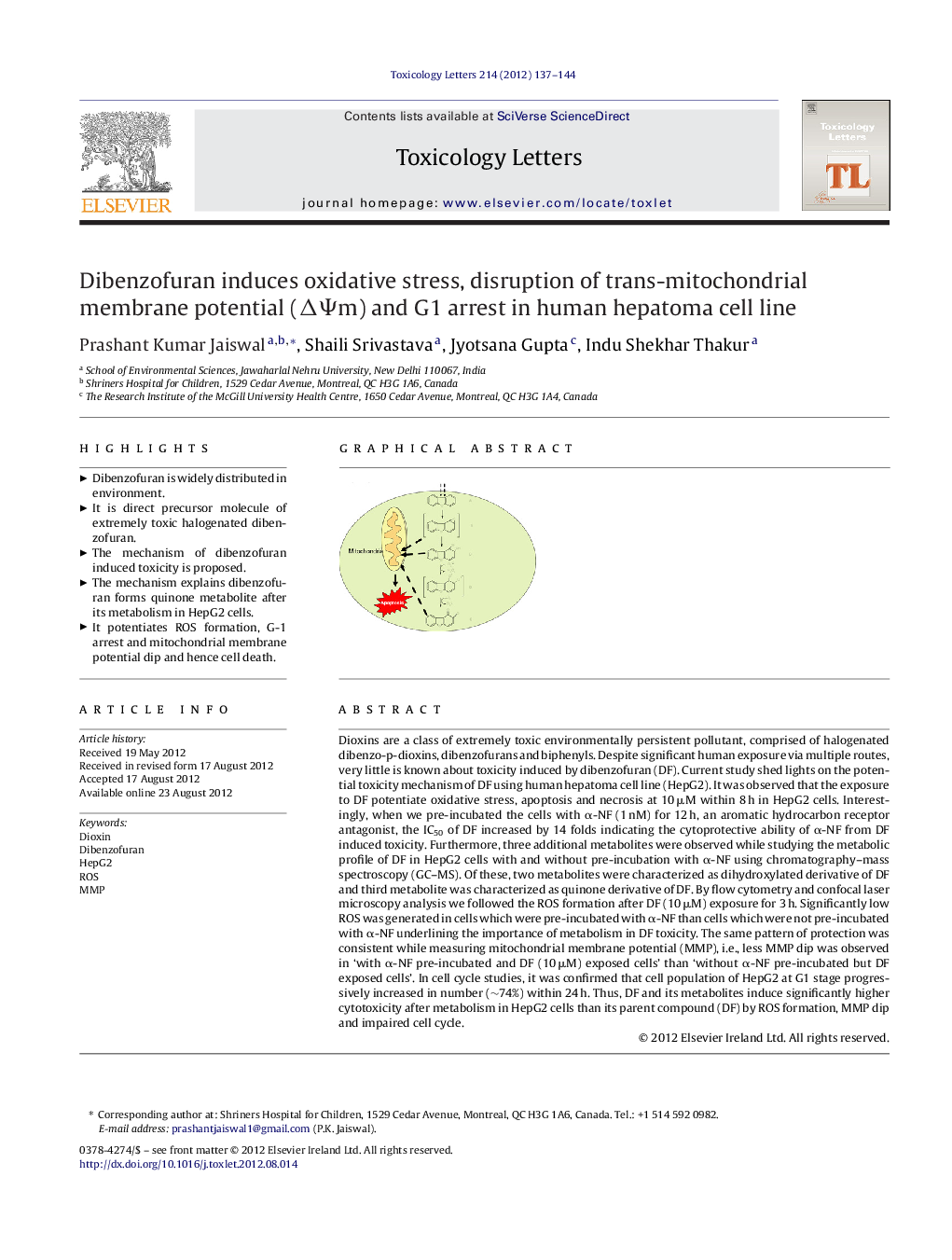| کد مقاله | کد نشریه | سال انتشار | مقاله انگلیسی | نسخه تمام متن |
|---|---|---|---|---|
| 2599636 | 1133223 | 2012 | 8 صفحه PDF | دانلود رایگان |

Dioxins are a class of extremely toxic environmentally persistent pollutant, comprised of halogenated dibenzo-p-dioxins, dibenzofurans and biphenyls. Despite significant human exposure via multiple routes, very little is known about toxicity induced by dibenzofuran (DF). Current study shed lights on the potential toxicity mechanism of DF using human hepatoma cell line (HepG2). It was observed that the exposure to DF potentiate oxidative stress, apoptosis and necrosis at 10 μM within 8 h in HepG2 cells. Interestingly, when we pre-incubated the cells with α-NF (1 nM) for 12 h, an aromatic hydrocarbon receptor antagonist, the IC50 of DF increased by 14 folds indicating the cytoprotective ability of α-NF from DF induced toxicity. Furthermore, three additional metabolites were observed while studying the metabolic profile of DF in HepG2 cells with and without pre-incubation with α-NF using chromatography–mass spectroscopy (GC–MS). Of these, two metabolites were characterized as dihydroxylated derivative of DF and third metabolite was characterized as quinone derivative of DF. By flow cytometry and confocal laser microscopy analysis we followed the ROS formation after DF (10 μM) exposure for 3 h. Significantly low ROS was generated in cells which were pre-incubated with α-NF than cells which were not pre-incubated with α-NF underlining the importance of metabolism in DF toxicity. The same pattern of protection was consistent while measuring mitochondrial membrane potential (MMP), i.e., less MMP dip was observed in ‘with α-NF pre-incubated and DF (10 μM) exposed cells’ than ‘without α-NF pre-incubated but DF exposed cells’. In cell cycle studies, it was confirmed that cell population of HepG2 at G1 stage progressively increased in number (∼74%) within 24 h. Thus, DF and its metabolites induce significantly higher cytotoxicity after metabolism in HepG2 cells than its parent compound (DF) by ROS formation, MMP dip and impaired cell cycle.
Figure optionsDownload as PowerPoint slideHighlights
► Dibenzofuran is widely distributed in environment.
► It is direct precursor molecule of extremely toxic halogenated dibenzofuran.
► The mechanism of dibenzofuran induced toxicity is proposed.
► The mechanism explains dibenzofuran forms quinone metabolite after its metabolism in HepG2 cells.
► It potentiates ROS formation, G-1 arrest and mitochondrial membrane potential dip and hence cell death.
Journal: Toxicology Letters - Volume 214, Issue 2, 17 October 2012, Pages 137–144